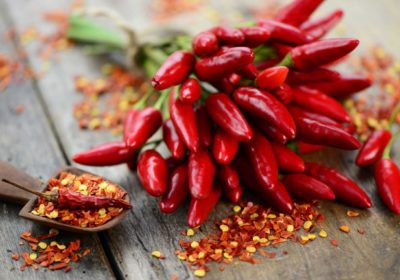the hot pepper

the hot pepper was used as food since ancient times. From the testimony of archaeological findings we know that as early as 5500 BC He was known in Mexico as a cultivated plant, and was the only speziausata by the Indians of Peru and Mexico. In Europe the chili came thanks to Christopher Columbus who brought it from America with his second voyage, in 1493. Since Columbus landed in the Caribbean island, most likely the species he had encountered was the Capsicum chinense, varieties Scotch Bonnet or Habanero, the most common in those islands.
Then introduced to Europe by the Spanish, he was an immediate success, but the gains that Spain was expected from such fruit trade (as was the case with other oriental spices) were disappointing, because the chili is very well acclimated in the old continent, spreading in all southern regions, in Africa and Asia, and was thus adopted as a spice also from that part of the population who could not afford the purchase of cinnamon, nutmeg and other spices widely used for flavoring and preserving food.
The fruit was called pepper because of the similarity in taste (though not in appearance), with pepper, Piper in Latin. The name by which it was called the New World was in Nahuatl chilli or xilli (pronounced / ʧilli / or / ʃilli /, Cilli or scìlli), and remains substantially in the Spanish of Mexico and Central America (chile) and in English (pounds) and even in some names of varieties, as the Chiltepin (C. annuum var. aviculare), derived from the Nahuatl language chilitecpintl or chili flea, for the size and taste fiercely spicy. The Chiltepin is considered the ancestor of all other species. In the South American countries of Spanish and Portuguese, however, it is commonly called ají, modernization dell’antillano asci. The word in Quechua for chillies is uchu, as in the name used by the Incas for the rocoto: ROCOT uchu, often hot peppers, pulpy.